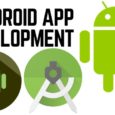During the considerable number of changes in digital marketing over the previous decade, social media has suffered; however, advanced every year to keep its place as one of the most remarkable directors in current marketing.
However, or all its guarantee, social media is a long way from simple. Consistent updates, savage rivalry, and fast moves in business sectors, consumer interests, security guidelines, and innovation all meet up in a mixture that is as baffling as it is powerful.
To assist you with watching out for what you have to think about social media marketing in 2020, we’ve aggregated this rundown of patterns – both new changes and proceeding with shifts in late changes.
Social channels, for example, Facebook, Twitter, or LinkedIn are not, at this point, merely social systems; they’ve changed into marketing stages to create more traffic to your site and income from your product or administration.
This sort of marketing isn’t new – Facebook launched Pages for organizations just as Facebook Ads (promotion arrangement appeared in the left section underneath) in 2007, for instance:
As an event management brochure company, I was not using social media for my brand promotion brands. This is poor marketing prudence since, but after adding social media in my marketing strategy, it became one of my favorites. Social media is currently one of the principal ways that individuals go when investigating brands and interfacing with them. Indeed, 54% of social media users go to social platforms when searching for new brands and products.
Here are the social media marketing patterns that you should actualize into your general digital marketing technique.
Pattern #1: Video Content Will Dominate Social Feeds
In case we’re straightforward, video content is now commanding social media. Here is a glance back at the effect of video marketing starting at 2019:
92% of users watching videos are versatile and will impart it to other people.
Social video produces 1,200% a more significant number of offers than text and picture content consolidated.
72% of clients would prefer to find out about a product or administration by the method of video.
Users invest 88% more energy in sites that have videos.
54% of consumers need to see more video content from brands:
Don’t Miss-
5 Most Common Mistakes in Both Social Media and SEO
Will Your Company’s Social Media Marketing Efforts Pay Off?
2. Pattern #2: Stories Will Take Center Stage
Social media Stories is fundamentally a sort of news source, yet visual as opposed to message overwhelming. The short video cut arrangement advocated by Snapchat was once thought to be a minor immature trend, sure to (or possibly ideally) beyond words rapidly. Instead, it seethed against all desires to get one of the quickest developing social media patterns of the most recent ten years.
What’s more, presently everybody needs to take part in the activity. Facebook couldn’t accept Snapchat, so they revealed a copycat Stories include Facebook, WhatsApp, and Instagram:
You can barely blame these other social systems for replicating Snapchat, as it presents unimaginable open doors for marketing:
Stories are becoming 15x quicker than takes care of
Both the creation and utilization has soared 842% since mid-2016
62% of individuals become increasingly keen on a brand or product in the wake of seeing it in a story
With video content now sovereignty in the marketing domain, the vanishing Stories group is the ideal channel to manufacture affinity with devotees. Advertisers can profit by individuals’ natural dread of passing up a significant opportunity (FOMO), which influences 69% of Millennials, driving a considerable lot of them to make buys.
Another extraordinary element is the capacity to include surveys or pose inquiries, which permits advertisers to assemble bits of knowledge from their crowd, building engagement through the straightforward, intelligent substance.
The vaporous substance causes individuals to feel good with sharing a higher amount of their unedited, not precisely ideal minutes without the dread of being judged. In this manner, it opens the phase to increasingly certifiable marketing that resounds with more huge crowds. In 2020, additional brands will jump aboard with Stories.
3. Pattern #3: More Companies Will Use Influencer Marketing
Influencer marketing is another entrenched strategy that isn’t going anyplace soon. Undoubtedly, 63% of advertisers intend to expand their current spending plan for influencer marketing in 2020 because the ROI is that acceptable – $5.20 for each $1 spent:
The explanation that influencers work so well is that consumers are careful about advertisements and untrusting of unremarkable corporate brands. In that capacity, they place more trust in somebody they know – regardless of whether the relationship is totally on the web. Social verification comes in numerous structures, irrespective of whether it’s loved ones, colleagues, or the client audits area on an online business store. Regardless, consumers give more weight to these audits than they never really brand.
Social media is the influencer’s domain, and its excellence is that you don’t need to be a gigantic enterprise with deep pockets to profit from its advantages. Little and medium organizations with a constrained spending plan can take advantage of the intensity of influencer marketing by banding together with small scale influencers (those with somewhere in the range of 1,000 and 1,000,000 supporters).
Pattern #4: Augmented Reality (AR) Will Go Mainstream
By 2022, the augmented reality showcase is relied upon to arrive at a market size of $209.2 billion, up from an unimportant $14.1 billion out of 2017. Pokemon Go and Snapchat channels and focal points are likely the most famous instances of AR in “ordinary” use; however, consider what other method brands can all the more likely utilize this innovation:
With regard to AR and social media, the reception has been moderate. Yet, as the innovation advances to offer something other than simple games, applications for online business, customized marketing, and product disclosure are slowly getting.
Facebook’s AR Studio is an “amazing asset intended to make dazzling intuitive encounters for the Facebook camera” with which you can “convey your substance to more individuals across new surfaces including Instagram, Messenger, and Facebook Lite.”
Augmented reality permits you to change the client’s involvement with a route at no other time seen – a genuinely exceptional shopping experience.
Restorative brand Sephora utilizes AR (alongside VR and AI) with its Sephora Virtual Artist application. This innovation permits users to “take a stab at” various kinds of make-up products while never venturing foot into a store; they should transfer a photograph of their face to the application. Sephora is an inventive case of how you can utilize augmented reality to customize and improve the client experience:
A portion of the manners in which that brands and advertisers can utilize augmented reality to advance their products or services include:
AR virtual stores on social media: Turning social shopping into an increasingly novel and vivid experience.
AR and live occasions: Allowing your worldwide crowd to go to your image’s opening from any place they are on the planet.
AR videos: Create intelligent AR videos to show your clients the best way to utilize your products (like an intuitive product demo or explainer video).
AR for better brand mindfulness: At this point, the innovation is new enough that an AR experience is profoundly shareable – which implies incredible verbal marketing.
AR innovation makes the ways for tremendous open doors for advertisers, and as its abilities improve, boundaries to passage fall, so you can anticipate enormous steps for this direct in 2020.
Client support Will Be about Chatbots.
Sometime in the past, speaking with a robot was a hair-pulling utter horror, as individuals would prefer to stay away from the pre-recorded flowchart-like understanding and converse with a genuine human.
Presently, however, individuals need to communicate with chatbots. Why? Trendsetting innovation implies that chatbots are more intelligent, snappier, consistently accessible, and more potent than the inconvenient programming frameworks of old:
90% of organizations report quicker grumbling goals with chatbots
56% of individuals want to message organizations as opposed to calling client assistance.
Chatbots can spare 30% on client care costs.
Little Ice, or XiaoIce in Chinese, is Microsoft’s most exceptional chatbot example of overcoming adversity: She’s Weibo’s (China’s biggest social media stage, with 445M+ month to month dynamic users) top influencer and has more than 850,000 supporters. Individuals who follow XiaoIce collaborate with her more than 60x consistently. By and large, the Turing test for ten minutes implies that users don’t understand that she’s a bot for the initial ten minutes of visiting with her.





